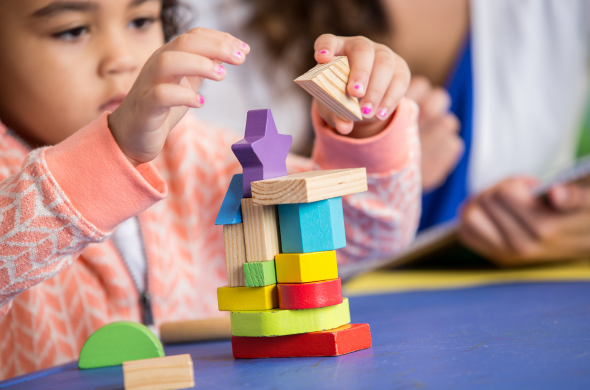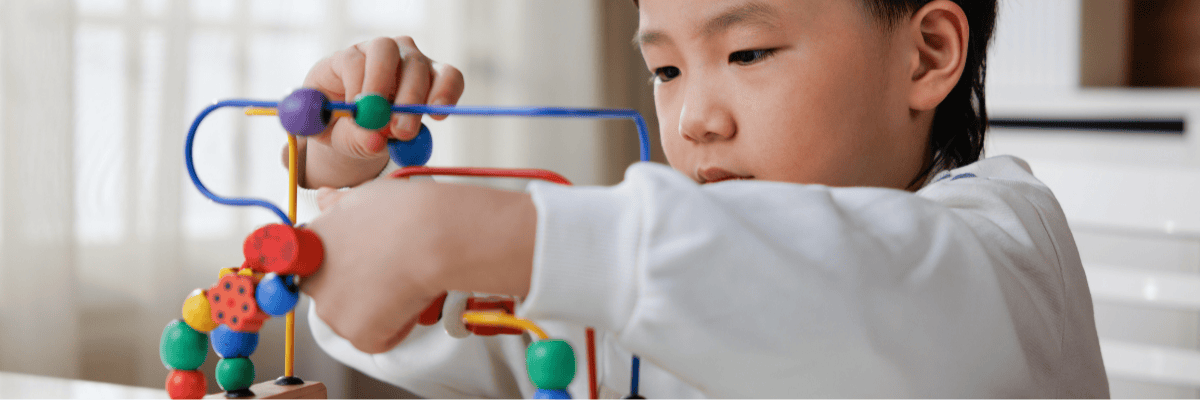Fine Motor Magic: Activities to Strengthen Little Hands
Hello everyone!
I hope you all are doing well! I was recently talking with a dear teacher friend of mine. She was expressing how so many of her 3rd-grade students still struggle with some fine motor skills and how it has negatively impacted their learning.
Fine motor skills are so important because they help people complete many everyday tasks, including writing, drawing, dressing, cooking, eating, and enjoying hobbies like playing instruments, video gaming, crafting, sewing, and so much more.
With the increase in digital usage, many students do not get the same opportunities to strengthen their hands and fine motor skills. My friend commented that it was affecting their writing, among other things.
She knew I used play-based learning a lot with my kindergarten students and saw how much it helped them succeed. So, we discussed ways she could create more possibilities for her students to practice their fine motor skills. The great news is that these ideas could be incorporated into any age classroom through centers, stations, and STEM!
Here are some activities you could try in your classroom to improve your students’ fine motor skills:
Building with LEGO® and blocks
Movements such as stacking, balancing, connecting, and organizing layout and structure all help students build fine motor skills. Let students draw out and create their own designs and build, then try reverse engineering by looking at pictures of objects, designs, and structures and having your students try to build them.

Playing with small toys like cars and marbles
Play-based learning is so important! When kids can practice manipulating and moving small toys, they will have fun, feel invested, and engage in learning longer. Young children can play freely, or all students can build race tracks or slopes and then time how fast their cars or marbles travel. They can also rebuild, adjust, and repeat to get their fastest times.
Use playdough or clay
Rolling, stretching, patting, pounding, cutting, and building with playdough tools like rolling pins, cookie cutters, and, of course, our fingers is such a fun way to build fine motor skills! Even older students love creating with clay!

Cutting paper
Give students different opportunities to practice cutting. Do free cutting using different kinds of paper and textures, then try cutting along lines and patterns to practice different shapes. Give progressively more challenging cutting exercises to build precision and accuracy. Some more difficult projects can be cutting intricate snowflakes or cutting fabric and felt to create displays for reports and projects.
Children may need extra support to learn how to hold scissors properly and maneuver the paper while they cut.
Using things with our hands
Practice with the proper amount of pressure to write, color, draw, paint, and glue with the different tools we use in the classroom is fundamental. Try using tweezers and tongs to pick up small things like pom poms. Try incorporating a clothespin center station where students can use clothespins to pin the correct answers on practice cards. Other ideas are to add hand actions to chants and songs or let students play hand-held instruments for a brain break or music instruction.

Sorting and manipulating small objects
Consider adding a sensory station where students can manipulate items like beans, seeds, beads, balls, colored dried pasta, or plastic counters. They can practice matching, sorting, measuring, adding, and subtracting the items, all while developing fine motor skills.
Tinkering
Tinkering is by far a favorite pastime among children. A STEM station with items they can create, make, and build with can be a wonderful part of your classroom.
Art
The ideas for art projects are endless and fabulous! You can include an art center and rotate between activities like finger painting, gluing down buttons, beans, pasta, and confetti, or drawing on large paper.
Older students could even perform a class play on a topic they’re learning and design, paint, and create props and backgrounds.

Have a Life Skills Station
Create a center where students can practice helpful life skills like opening plastic containers and jars with lids, buttoning and zipping, pouring and measuring, scooping and moving, brushing and braiding, stirring and flipping, building a pretend sandwich, counting and sorting coins, cleaning and wiping with sponges and cloths, or setting a table.
Seasonal and Holiday Activities
It’s fun to incorporate fine motor skills into seasonal activities for the holidays, such as lacing string or yarn through thick paper to make Christmas stockings or making ornaments and bracelets with pipe cleaners and beads.
You can also celebrate the holidays while practicing fine motor skills by decorating cookies, cakes, or a pizza. If you don’t want to use real food, you can make pretend food made of cardboard or paper, glitter glue, and beads.

Playing card games and board games
Manipulating and holding cards and moving game pieces all help develop fine motor skills. They also help students use critical thinking and other communication skills to play with friends.
Draw on whiteboards
My students loved using wipe-off markers and small individual whiteboards to practice all sorts of skills, such as writing sight words, letters, and numbers, sounding out new words, creating math equations, and drawing pictures to solve problems. I always gave them time to free draw after we practiced as a reward, and they got to hold up their pictures for everyone to see.
Other Ideas
Here are some more ideas that hopefully will help inspire ways to practice fine motor skills with your students:
- Put pom poms in water bottles or create an I-Spy bottle with other small objects
- Roll, toss, and catch balls of different sizes. Set up obstacle courses outside or make up games with soft foam balls for silent games inside.
- Use scarves to move to songs, dress up, toss and catch, or do free-play movement.
- Using stickers to make a picture. The whole process of taking stickers off the sticker sheet, placing them on paper, and then removing and moving them is very good for building fine motor skills.
- Cut pieces of yarn and glue on paper or felt to create designs.
- Cut up leaves and create a picture.
- Bend pipe cleaners to create shapes, animals, people, and more.
- Count seeds in an apple or in a pumpkin.
- Poke holes in construction paper with thumbtacks to make outlines that you can hang in the window for the sun to shine through. We did this for Halloween to make Jack-o’-lanterns.
- Practice lacing and tying different kinds of shoes.
- Weave patterns with paper or string.
- Explore with different sizes and strengths of magnets.
I hope you find these ideas useful, and I’d love to hear what ideas you use with your class to help strengthen fine motor skills in your students.
Warmly,
Debbie
 Debbie Bagley works as a Studies Weekly Teacher Advocate. Teacher Advocates are former teachers who help teachers like you implement Studies Weekly materials into their instruction. Teacher Advocates are available to provide support through email, phone call, video chat, and regularly scheduled Teacher Talk Webinars on Tuesdays and Thursdays. Teacher Advocates are only available for classroom teachers currently using Studies Weekly materials. They are not available for homeschools.
Debbie Bagley works as a Studies Weekly Teacher Advocate. Teacher Advocates are former teachers who help teachers like you implement Studies Weekly materials into their instruction. Teacher Advocates are available to provide support through email, phone call, video chat, and regularly scheduled Teacher Talk Webinars on Tuesdays and Thursdays. Teacher Advocates are only available for classroom teachers currently using Studies Weekly materials. They are not available for homeschools.